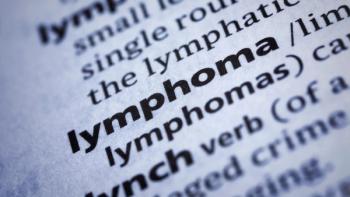
Drug Provides High Response Rate in CLL
Venclexta (venetoclax), a BCL-2 inhibitor, had promising results in patients with relapsed or refractory chronic lymphocytic leukemia (CLL). According to an updated analysis of a clinical trial, the agent led to negative minimal residual disease (MRD) in 40 percent of patients involved.
William G. Wierda, M.D., Ph.D.
Venclexta (venetoclax), a BCL-2 inhibitor, had promising results in patients with relapsed or refractory chronic lymphocytic leukemia (CLL). According to an updated analysis of a clinical trial, the agent led to negative minimal residual disease (MRD) in 40 percent of patients involved.
By flow cytometry of peripheral blood specimens, 40 of 101 evaluable patients achieved MRD-negative status, — meaning that no residual disease was detected – as did 18 of 74 patients by next-generation sequencing (NGS). MRD status in bone marrow was assessed by flow cytometry in 68 patients and by NGS in 37. Results showed MRD negativity in 20 patients by flow cytometry and nine by NGS.
Among 32 patients who achieved a complete response with or without complete hematologic recovery (CR/CRi), 22 had MRD-negative peripheral blood by flow cytometry and an estimated 24-month progression-free survival (PFS) of 100 percent, as reported at the 2017 Society of Hematologic Oncology Annual Meeting.
“Venetoclax monotherapy demonstrated a high rate of objective responses that were durable in patients with 17p-deletion CLL, including those patients who had received prior BCR inhibitor therapy,” said lead author William G. Wierda, M.D., Ph.D. “Venetoclax was well tolerated. Cytopenias were managed by dose adjustments and/or supportive care. Infections were consistent with underlying disease, and no clinical tumor lysis syndrome was observed.”
The findings came from a new analysis of the pivotal M13-982 trial that supported FDA approval of Venclexta for treatment of CLL harboring chromosome 17p deletion (del[17p]). The update included an analysis of MRD data and additional the primary safety and efficacy data.
Patients eligible for M13-982 had relapsed or refractory CLL associated with del(17p). Patients with previously untreated CLL were included in an expansion safety cohort.
Response to Venclexta was assessed by means of the International Working Group on CLL 2008 criteria. Investigators assessed MRD status in peripheral blood and bone marrow of patients who achieved CR or CRi or in patients with partial response associated with persistent nodal masses.
The total study population comprised 158 patients (51 in the safety expansion), who had a median age of 67. They had received a median of two prior lines of therapy, including 11 percent of patients previously treated with a BCR inhibitor.
Wierda reported that 122 of 158 patients (77 percent) had objective responses, including CR/CRi in 32 of 158 (32 percent). The median time to response was one month, and median time to CR/CRi was 9.8 months. Four of five patients with previously untreated CLL had objective responses, including 2 CRs. Median duration of response in the original cohort of 107 patients had yet to be reached at 24 months.
The subgroup of patients with prior BCR inhibitor treatment had an objective response rate of 61 percent, including CR in 11 percent. They had a 12-month PFS of 50 percent and overall survival (OS) of 54 percent.
Median PFS for all 158 patients was 27.2 months, and estimated 24-month PFS was 54 percent. Estimated 24-month OS was 73 percent.
For the entire study population, 48 of 158 patients (30 percent) were MRD-negative by flow cytometry assessment of peripheral blood. The status was confirmed by NGS in 21 of 29 patients who had matched time-point specimens.
The most frequently documented adverse events (AEs; all grades) for 155 evaluable patients were neutropenia (42 percent), diarrhea (39 percent), nausea (37 percent), anemia (25 percent), fatigue (23 percent) and thrombocytopenia (20 percent). The most common grade 3/4 AEs were neutropenia (40 percent), anemia (15 percent) and thrombocytopenia (15 percent).
The most frequent serious AEs were pneumonia (10 percent), autoimmune hemolytic anemia (5 percent) and pyrexia (5 percent). Wierda reported that 81 percent of patients developed infections (all grades), including 23 percent that were grade 3/4. The rate and spectrum of infections were consistent with the underlying disease, he said.




